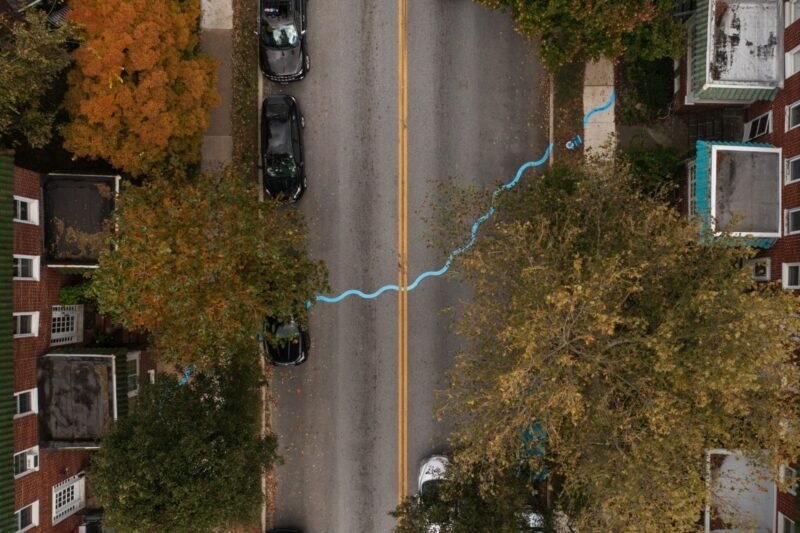Trend 5: From Digital To Real

Many things happening in the digital space have a big impact on the physical. Specifically when it comes to urban art. Cursors pop up on urban squares and tweets are painted on walls and buildings. Over the last year(s) the Internet, and more specifically social media, have continuously inspired (street) artists to act in public space. Google (the company that slowly loses its untouchable image) has been a huge source of inspiration or irritation to various artists. This has led to, for instance, a thought-provoking fake Google Street View Car that was made by the Free Art & Technology Lab (F.A.T.) during Transmediale Berlin 2010. Or a series of stickers by Italian artist Filippo Minelli which shows us the world where everything is powered by Google. Digital symbols seem to pop up everywhere on the streets of the city. People begin to wear real-life Foursquare badges on their jackets, and Facebook ‘Like’ stickers are placed on street furniture.
Another interesting example characterizing this trend is the French Pop-Down Project, which brings pop-up blocking to real-life advertising and other annoying elements you find on the street. Through a special website people can obtain themselves those little red ‘Close’ boxes, that are designed to look just like the click-out boxes in the corner of pop-up windows, and paste these on everything that should disappear. Something similar is Paul Mutant’s famous artwork ‘This Painting Is Not Available In Your Country’, which addresses the place-boundedness of the Internet.

Sebastian Campion’s Urban Cursor was an interesting art project since it consisted of one oversized 3D computer cursor that was placed on a square in Figueres, Spain. Passers-by were encouraged to move the artwork, play with it, and use it as a bench. The cursor contained a GPS device that transmitted geographic coordinates to a Google Map on a website, thereby documenting the object’s movements in the real world. A recent work within the ‘Digital to Real’ trend is the recently launched Dead Drops project in which new media artist Aram Bartholl created an anomymous, offline, peer to peer file-sharing network in public space in New York City by ‘injecting’ USB flash drives into publicly accessible walls, buildings and curbs.
This article belongs to the Top 10 Trends For 2011. Over the last year we have been writing articles about urban culture and innovations in cities on a daily basis. Reflecting on 2010 and looking into 2011 we have put together a list with ten of the most remarkable trends that we spotted. We would like to deepen them out a little in a series of articles published this week on Pop-Up City.



